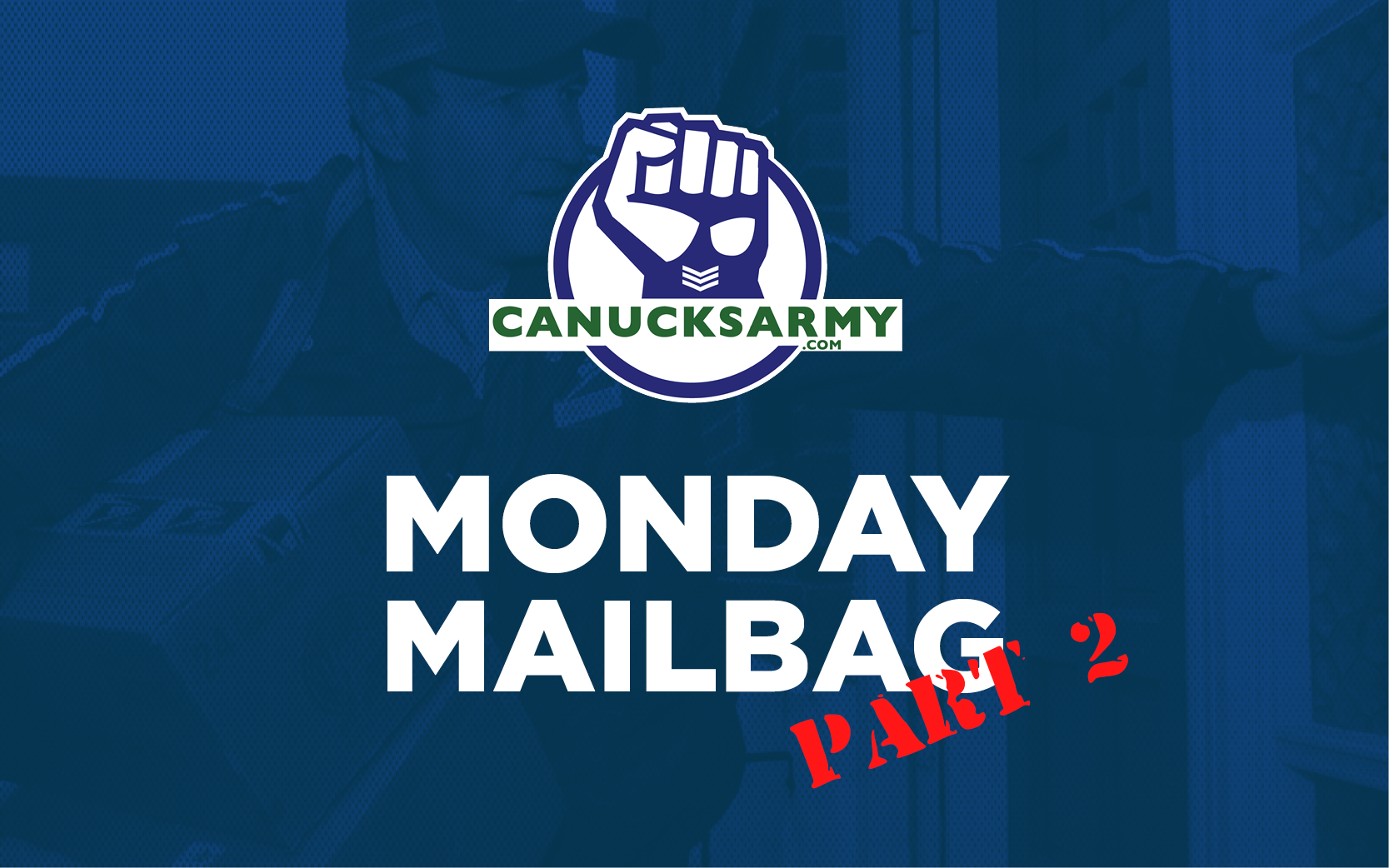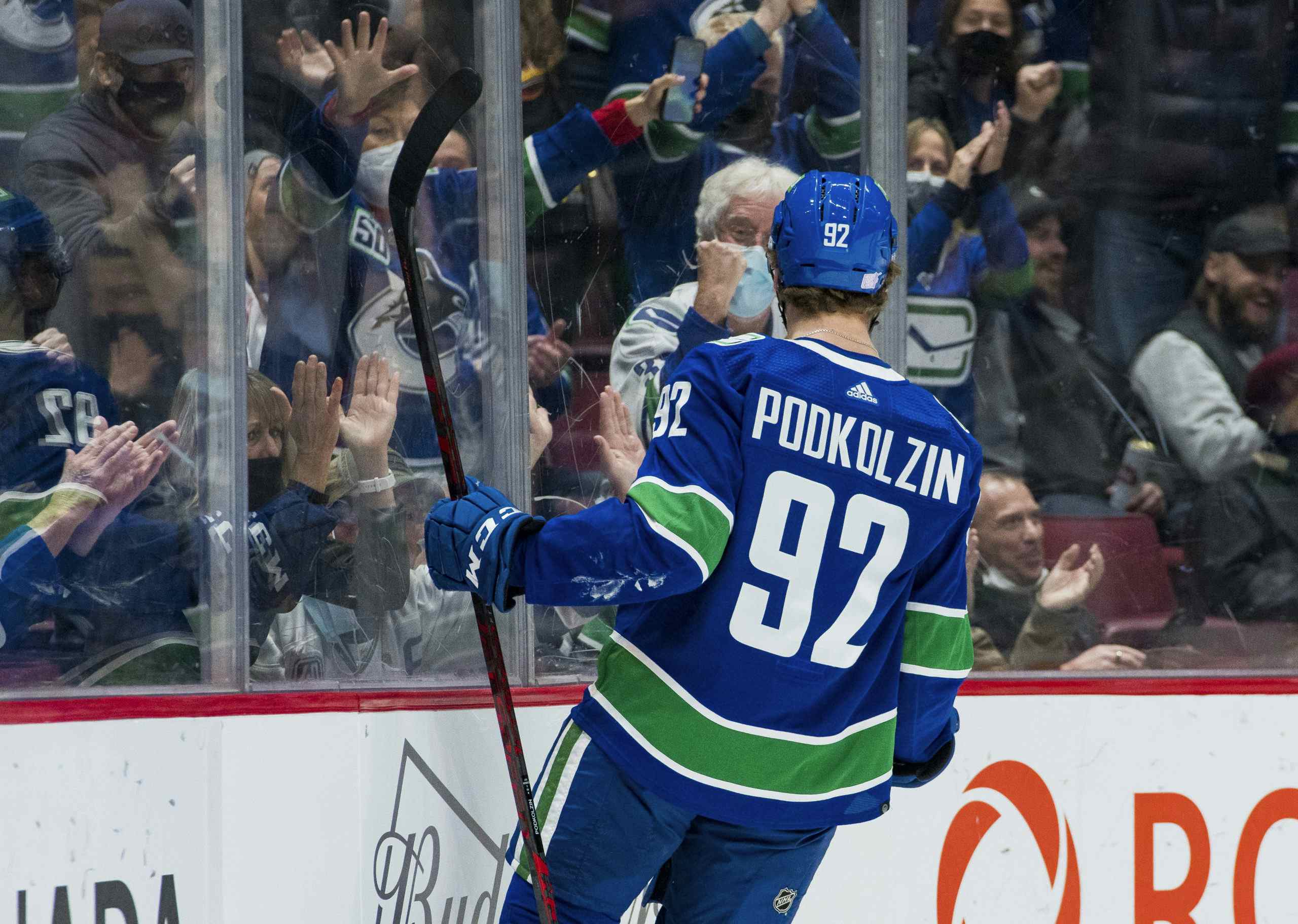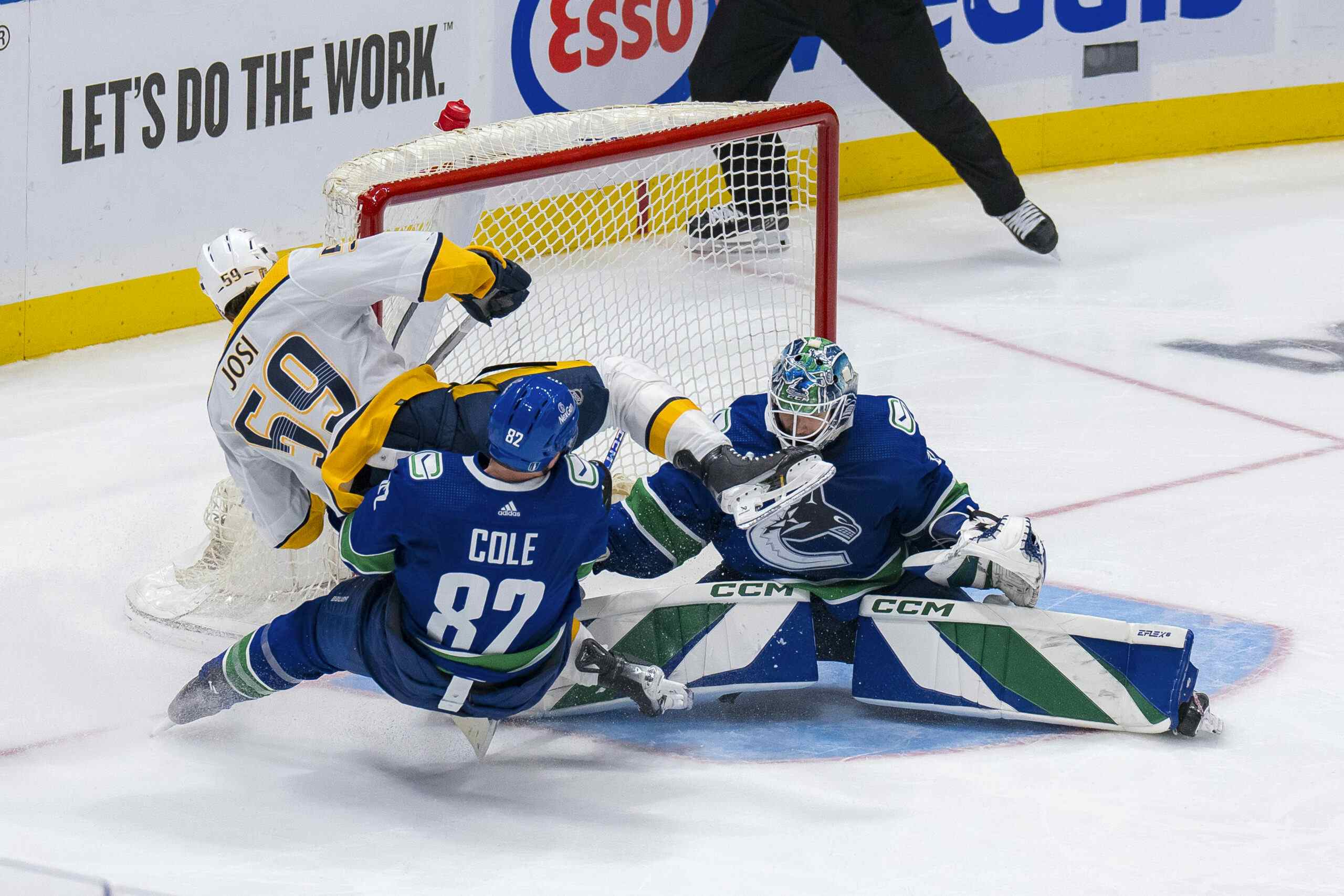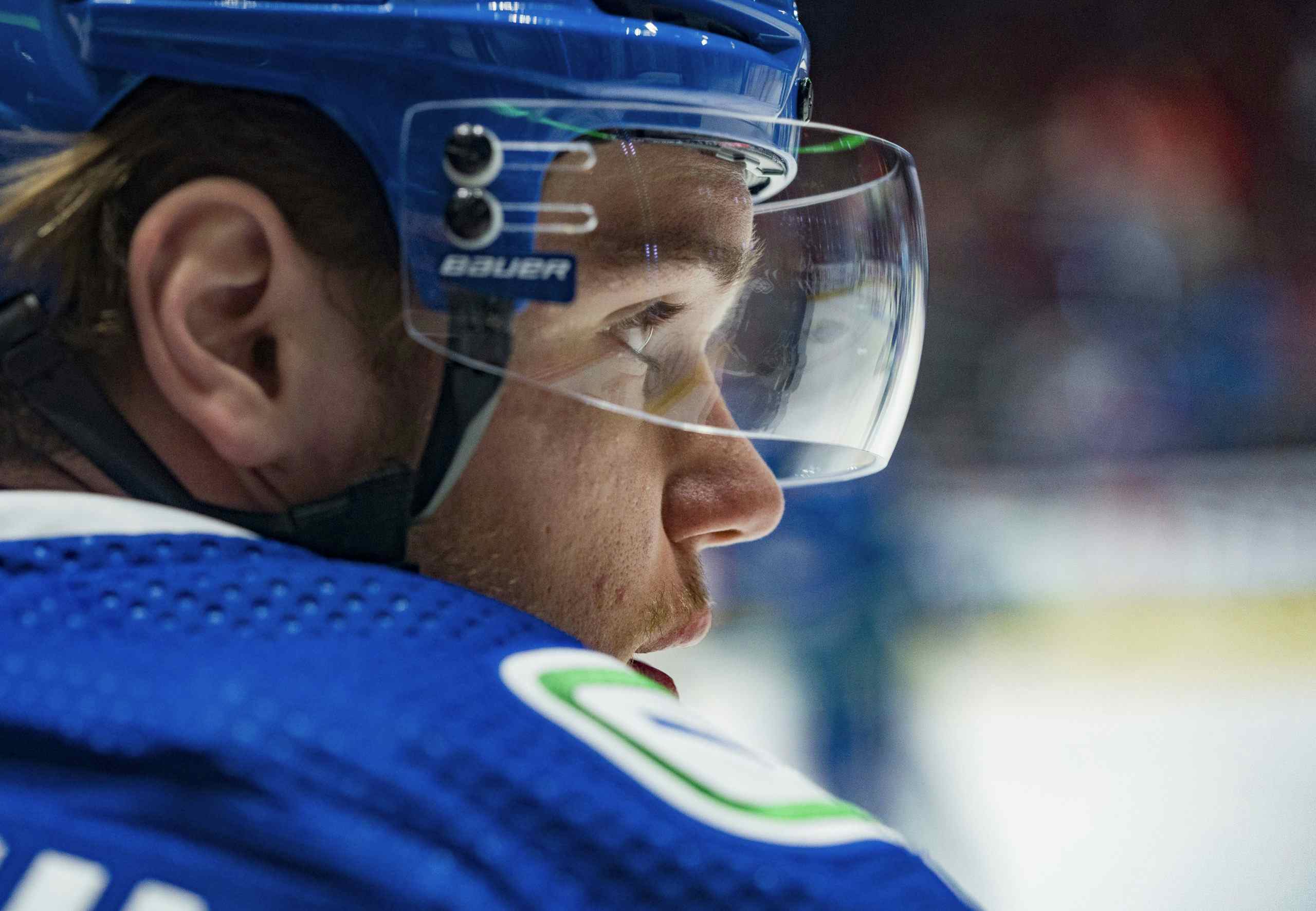Mailbag Part 2: Nils Hoglander, Hughes’ Defence, and the Goalie Situation

4 years ago
Nils Hoglander was putting up strong numbers for 19-year-old in the SHL before he was loaned to team Sweden for the WJC, while Podkolzin was producing much more mixed results, so I’d say that both trends have a decent chance of continuing.
I’d caution against getting too down on Podkolzin, though. He’s in a tougher spot than almost any other prospect from the 2019 draft, and he’s fared quite well whenever he’s been loaned to one of Russia’s lower leagues. It’s unfortunate that he couldn’t produce enough to quell some of the concerns during his stint at the World Juniors, but performance at that tournament doesn’t mean much in the grand scheme of things.
I lean towards the latter, but I’m glad Hoglander has made a name for himself with his performance at the WJC, because he’s a fantastic prospect. He likely should have gone in the first round, and he made a number of “best available players on day 2” lists when he wasn’t selected.
Essentially, how you feel about each of the two prospects will probably say a lot about how much you trust draft analytics vs how much you trust traditional scouting. Hoglander is making a very strong statistical case that he’s the best Canucks prospect, but he doesn’t have the kind of institutional buy-in from the scouting community that Podkolzin possesses.
For what it’s worth, I’ve spoken to a few scouts about Podkolzin and each has assured me that he’s dominated in terms of underlying numbers when he’s played in the KHL, even if the scoring hasn’t come yet. He’s still #1 on my list.
I’m tired of making predictions, man. I haven’t the slightest clue. Logic dictates that it should be the Lightning, but the NHL isn’t governed by logic, it’s dictated by absurdity. I’ll go with the Canucks. Why not?
I don’t think so. He never looked out of place in the Czech team’s top-six, but Podkolzin passed the eye test and put up 5 points on what was a fairly deep Russian squad, so I’ll give him the edge.
That’s a great question. The Canucks have a lot of contracts expiring within the next year or two and it’s safe to bet that they’re going to have to trade someone to fit under the cap. Whether or not that person is Jake Virtanen remains to be seen. I would put my money on Troy Stecher before Jake, but anything’s possible.
The Canucks have a couple different options when it comes to the expansion draft. Re-signing Markstrom will give them some flexibility while Demko and DiPietro continue to develop, and if he signs a hefty contract (and it’s looking more and more like he will), the Canucks could also expose him in the hopes the Seattle passes in favour of a younger, cheaper goaltender. It’s all going to depend on how ready Demko and DiPietro look for their respective roles as starter and backup. If Demko falters and DiPietro continues the rise, I wouldn’t be surprised if the Canucks bite the bullet and expose Demko.
Unless the team totally falls apart over the second half of the season, there’s no way the Canucks do anything but hand Markstrom a blank cheque. They need solid goaltending to keep them in the playoff picture and doing anything else will likely involve too much risk for the Canucks to be interested.
The team is in a tough spot. They’re in such a tough spot, in fact, that I’m not entirely sure what I’d do in this situation. While I have my qualms with how the front office handled the rebuilding stage, it’s clear at this point that the team needs to be focused on making the playoffs. We can talk about the future until the cows come home, but if the Canucks end up giving Tampa a lottery-eligible pick no amount of asset accumulation is going to make up for it.
With that in mind, I think I would at least keep Markstrom until the end of the season, look at cheaper options in free agency, and then circle back to Markstrom if he’s the best option. If Demko and DiPietro are ready when the expansion draft rolls around, then the Canucks can expose him to escape cap hell.
If Hughes has any glaring weaknesses defensively, I haven’t seen them. He owns the lowest rate of shots against among Canucks defenders, and leads the team’s blue line in shot share and expected goal share. I spoke to former CA overlord and current Managing Editor of EliteProspects.com and EP Rinkside J.D. Burke about Hughes for the prospect profile I wrote earlier this year, and I think what he said about Hughes’ defensive game is as relevant as ever:
Much of the discourse as it concerns Quinn Hughes’ ability to defend at the NHL level is of a different era. Puck possession is more than half the battle, and every indication out of college is that Hughes’ ability to push the pace of play, execute zone exits and entries with full control of the puck, etc. is suggestive of a player that should excel in this regard at the NHL level. Furthermore, Hughes is just plain good defensively. His positioning is sound. His battle-level is through the roof.It’s Hughes’ volatility as a puck-carrier that results in the assumption that he can’t play defence. Hughes attempts plays that most couldn’t process from the comfort of their couch, with the benefit of a bird’s eye view of the rink. It works far more often than not, but when it doesn’t — it sticks out. Usually, because it leads to sustained offensive pressure against or a goal in the back of the net. The question, ultimately, is whether Hughes does enough subtle things well to make up for the glaring mistakes. I find myself decisively in the ‘yes’ camp, and so too will most Canucks fans.
Based on what I had seen of Hughes and heard from scouts prior to his NHL debut, I assumed he would be a turnover machine, even if I didn’t view it as a significant issue, but that hasn’t really been the case. We’re over halfway through the season and he’s mostly passed the eye test when it comes to avoiding ugly turnovers. It’s still early, but it wouldn’t be out of line to suggest that Hughes isn’t just the team’s best defenceman offensively, but defensively as well.





